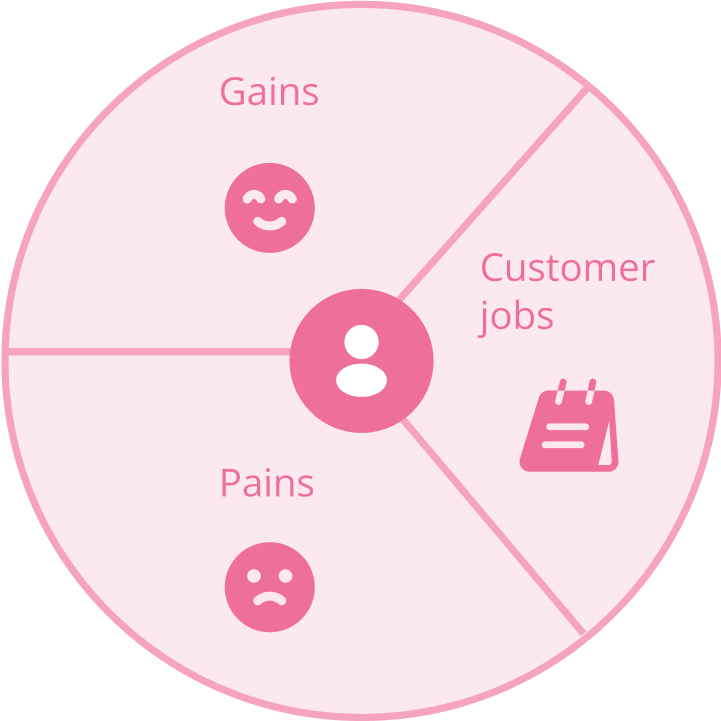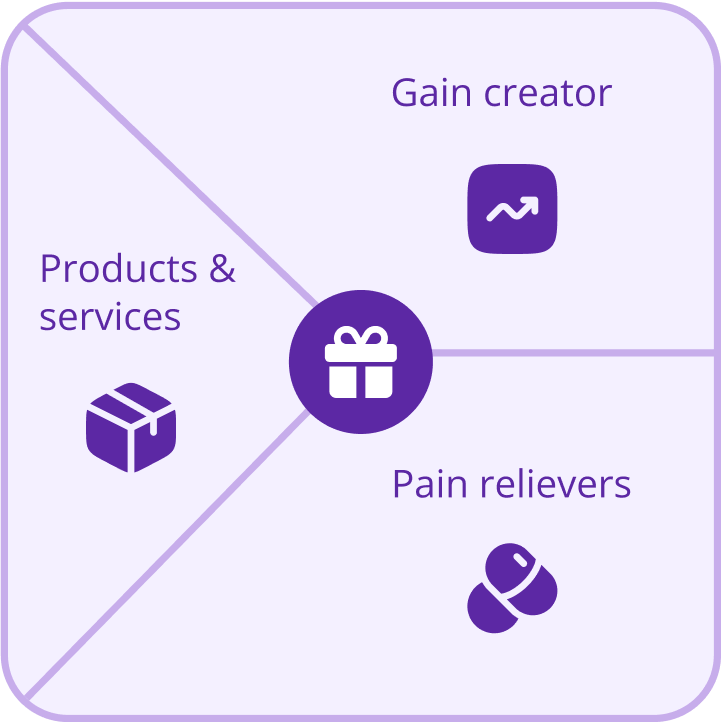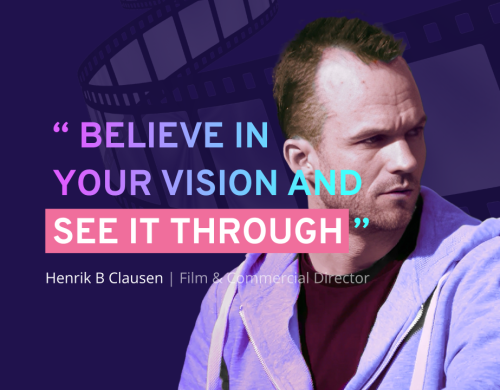Mastering the Art of Value Hypothesis: A Filmmaker’s Strategic Blueprint

A Comprehensive Guide to Value Hypotheses: Essential Insights
Creating captivating films, TV shows, and videos is an art that intertwines creativity with strategic planning. While the film industry bursts with unparalleled talent and vision, there remains a void in structured guidance and accessible templates to navigate the complex journey from ideation to execution. This gap not only challenges filmmakers and TV producers but also video creators who are in constant pursuit of bringing their stories to life in a way that resonates with audiences and ensures sustainability.
Our comprehensive blog on the Value Hypothesis and Value Proposition Canvas offers a universal blueprint for understanding and applying core principles that can transform how you approach your projects. Although the article adopts a broad perspective, making it applicable to any business, its relevance to the film, TV, and video production domains is undeniable and profound.
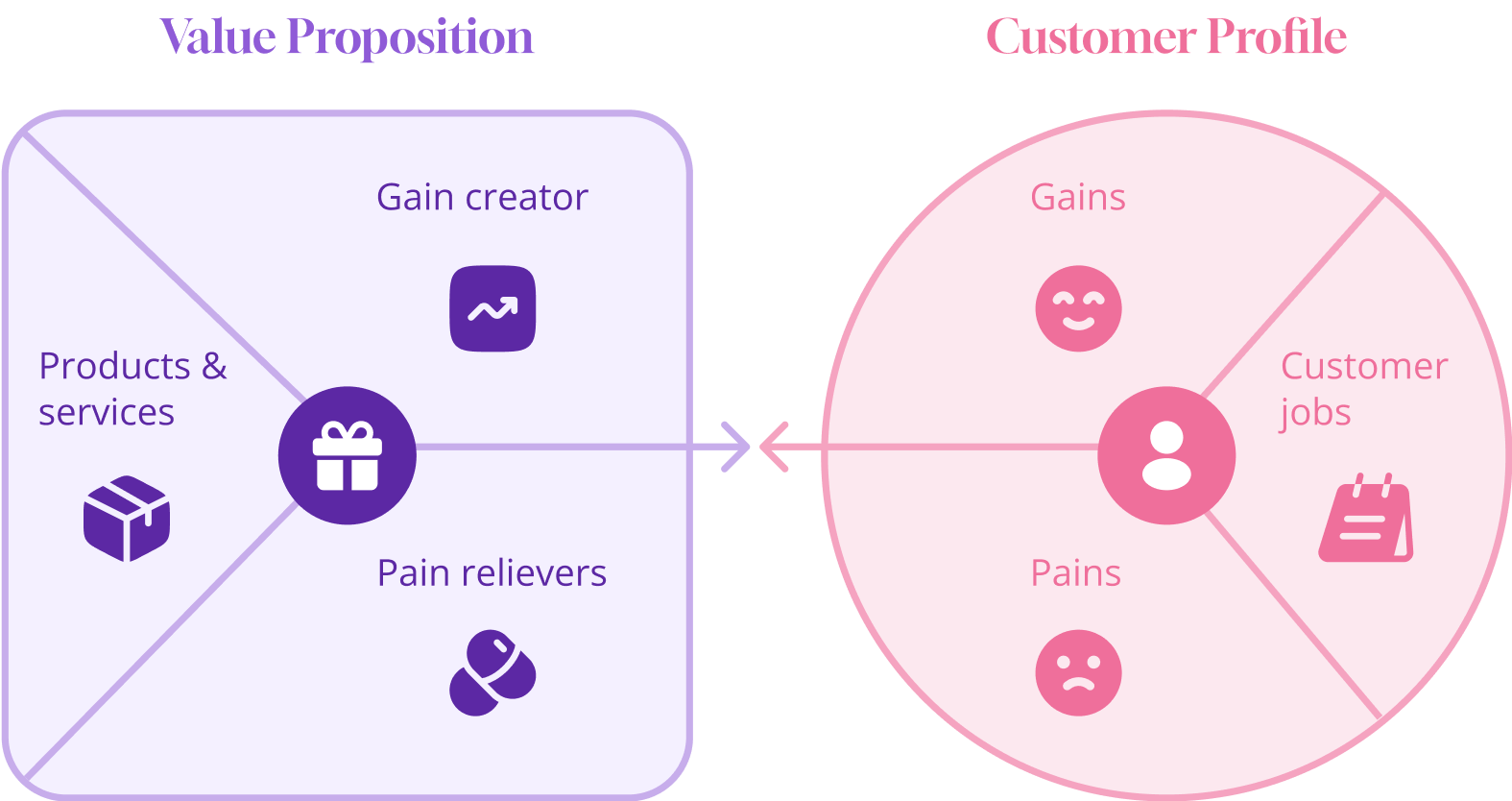
Why, you may ask, should creatives in these fields invest their time in a seemingly generic article? The answer lies in the foundational value these concepts bring to the table. The Value Hypothesis and Value Proposition Canvas are not just business tools; they are lenses through which you can critically assess, refine, and articulate what makes your project unique, how it addresses genuine audience needs, and why it deserves attention in a crowded marketplace.
The film industry, known for its competitive and ever-evolving nature, lacks structured, easily accessible educational materials that cater specifically to the nuanced needs of filmmakers, TV producers, and video creators. This absence makes it all the more crucial to grasp the underlying principles that drive successful projects and businesses. Understanding the Value Hypothesis helps you pinpoint the core assumptions behind your project’s potential success, allowing you to test and validate these ideas effectively. Meanwhile, the Value Proposition Canvas enables you to map out the key elements that make your project appealing to your target audience, ensuring that every aspect of your production—from storytelling to marketing—aligns with their expectations and desires.
By reading our article, you’ll gain insights into these critical strategic frameworks, equipping you with the knowledge to apply them to your unique context in the film, TV, and video industries. And this is just the beginning. We encourage you to delve deeper into our dedicated articles on crafting business plans specifically tailored to film, TV, and video script and production. These follow-up reads build on the foundational knowledge provided in the initial blog, offering you detailed, industry-specific guidance that addresses the unique challenges and opportunities you face.
In essence, our article serves as a stepping stone towards mastering the art of strategic planning in your creative endeavors. It’s an invitation to explore new ways of thinking about your projects, to innovate within your field, and to ultimately create work that not only fulfills your artistic vision but also achieves commercial success. So, whether you’re an independent filmmaker, a TV show producer, or a content creator for digital platforms, understanding the principles of the Value Hypothesis and Value Proposition Canvas is a crucial step in your journey to making a lasting impact with your art.
The Blueprint of Business Success: The Value Hypothesis and Value Proposition Canvas
Welcome to an informative exploration of the Value Hypothesis and the Value Proposition Canvas. If you’ve ever been curious about what exactly a Value Hypothesis is or why the Value Proposition Canvas is important, then this guide is for you. We’re here to clarify these concepts and show how they are crucial to developing successful products or services.
The Value Hypothesis forms the core of every innovative product or service. Far from being just sophisticated terminology, it represents the essential belief that your offering will provide value to your customers. It serves as the fundamental basis for your business strategy, indicating the potential success of your product or service in the market.
Understanding Your Audience: Creating a Customer Profile
Consider taking a moment to see things from your customer’s perspective. What are the challenges and problems they face that drive them to seek solutions? This step involves exploring the ‘Pains’ and ‘Wants’ (also called Jobs) of your customers, distinguishing between their significant and minor issues, and recognising the tasks they are trying to accomplish.
>>>
The Nature of Customer Pains
We start by examining the various pains your customers experience. These issues range from slight annoyances to significant problems that negatively impact their daily lives. By inquiring about what frustrates your customers or what fears they might have, you can identify the key issues they need addressed.
Understanding Latent and Acute Customer Pains
The Concept of Latent Pain
Consider a scenario where customers are aware of a problem but choose not to act on it immediately. This situation is referred to as Latent Pain. It’s akin to a minor inconvenience or a forgotten task that doesn’t seem urgent enough to address right away. Customers in this stage recognise an issue exists but may not feel compelled to seek a solution due to a lack of immediate impact or motivation. However, it’s important to note that changes in circumstances can quickly escalate latent pain into a more pressing concern.
Transitioning to Acute Pain
The situation intensifies when we shift from latent to Acute Pain. Here, the previously overlooked problem becomes a significant obstacle demanding immediate attention. This shift marks a critical point where customers actively seek solutions to their now-pressing issues. Acute Pain represents a clear and immediate problem that disrupts the customer’s status quo, compelling them to take action. It’s at this juncture that the search for a solution becomes a priority.
Through the progression from Latent to Acute Pain, we observe a dynamic change in customer behaviour—from passive awareness to active solution-seeking. This evolution underscores the importance of recognising and addressing customer pains at both stages. Understanding this transition is crucial for developing timely and practical solutions that meet customers’ evolving needs.
Understanding Your Customer Pains

Identifying your customers’ pains is about comprehending the challenges, frustrations, and obstacles they face. Gaining this understanding is essential for developing solutions that effectively address their actual problems.
Here are some strategies to help you understand your customers’ pains better:
- Explore the frustrations or obstacles that your customers come across.
- Determine the risks or fears that are of significant concern to your customers.
- Identify the main challenges or difficulties faced by your customers.
- Evaluate where existing market solutions fall short.
- Review aspects of your product or service that may not fulfil customer needs.
To indeed verify your understanding of your customer base, it’s important to describe both the latent and acute pains your customers experience.
Identifying Customer Wants: Understanding Jobs to be Done
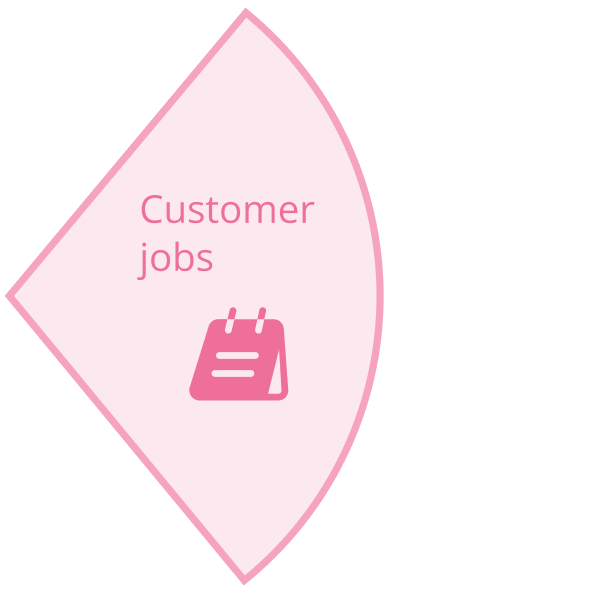
In this section, we delve into understanding ‘Wants’ or the
‘Jobs to be Done’ by our customers.
This involves identifying the various tasks and objectives
customers aim to achieve with the help of your product or
service. The focus is on grasping the range of challenges
they encounter daily, from routine to significant ones.
![]() Tips for Identifying Customer Jobs:
Tips for Identifying Customer Jobs:
- Determine essential tasks that your customer cannot afford to ignore.
- Identify daily tasks that your customers face in both their professional and personal lives.
- Explore tasks that require your customer to interact with others.
- Understand the underlying needs your customers are trying to meet through these tasks.
- Consider potential tasks that your customers might not yet recognise they have
Exploring Customer Gains: Seeking Added Value

Customer gains are the valuable outcomes and benefits that individuals seek when choosing your product or service. It’s important to identify not only the basic and expected gains but also those that can significantly enhance the customer experience, making it more rewarding.
![]() Tips for Identifying Customer Jobs:
Tips for Identifying Customer Jobs:
- Determine essential tasks that your customer cannot afford to ignore.
- Identify daily tasks that your customers face in both their professional and personal lives.
- Explore tasks that require your customer to interact with others.
- Understand the underlying needs your customers are trying to meet through these tasks.
- Consider potential tasks that your customers might not yet recognise they have
Exploring Customer Gains: Seeking Added Value
Customer gains are the valuable outcomes and benefits that individuals seek when choosing your product or service. It’s important to identify not only the basic and expected gains but also those that can significantly enhance the customer experience, making it more rewarding.
Guiding Questions to Identify Customer Gains:
- What improvements could make your customers’ jobs or lives simpler?
- In what ways can you exceed your customers’ expectations?
- How can you introduce elements of surprise or delight for your customers?
- What potential risks can your offering eliminate or reduce for your customers?
- How does your product or service provide peace of mind to your customers?
There are four types of gains to consider, each playing a crucial role in shaping the value your offering delivers. Choose one to focus on and explain why it’s particularly relevant to your strategy.
Required Gains:
These are the fundamental benefits that your customers expect to receive. Without these, your product or service wouldn’t be viable or competitive. They represent the essential value that customers seek in any offering.
Expected Gains:
These gains are the additional benefits that customers anticipate based on their experiences with similar offerings. While not essential for the basic function of your product or service, they are crucial for customer satisfaction and appeal.
Desired Gains:
Desired gains go beyond what’s expected to offer customers something they highly value. These gains can set your offering apart from competitors and are key to creating delighted customers.
Unexpected Gains:
These are the gains that customers didn’t even know they wanted until they experienced them. Offering unexpected gains can significantly elevate the customer experience, distinguishing your product or service with innovative and revolutionary benefits.
Developing the User Story
In every customer interaction, there’s a story to be told. The User Story is your opportunity to detail your customer’s experience — highlighting their needs, their challenges, and how your solution effectively addresses these issues.
Key Questions for Crafting a User Story:
- Who exactly is your customer?
- What goal is your customer trying to achieve?
- How often does your customer need to perform this task?
- What does a successful outcome look like for your customer?
- How does it impact your customer when things don’t go as planned?
To structure your user story, consider using the following template:
As a [type of customer] …
I want [to achieve some goal] …
So that [I can accomplish some reason] …
Defining Your Offering: Shaping the Value Proposition
Take a moment to reflect on the unique value your product or service brings to the market. What sets your offering apart, and why should customers choose it over the competition? This phase of the Value Proposition Canvas focuses on articulating the ‘Gain Creators’ and ‘Pain Relievers’ that your offering provides, pinpointing how it enhances customer experiences or solves their problems. It’s about clearly defining the benefits and solutions your product or service offers, ensuring they align with the needs and desires identified within the Customer Profile.
>>>
Articulate Your Value Proposition: Offering and Impact
Your Value Proposition encompasses the core offerings of your business, including both tangible products and intangible services, designed to meet the specific needs of your customers. This proposition is crucial for creating value, solving customer problems, and ensuring satisfaction. Tangible products are physical items that customers can buy, use, and benefit from, such as medicines and diagnostic devices in healthcare. Intangible services, on the other hand, represent the expertise, time, and skills provided by professionals like doctors and nurses. Together, these products and services form a comprehensive solution that addresses customer needs effectively, demonstrating the significant role your offering plays in fulfilling customer expectations and achieving success.
When deciding on the type of offering your business provides, it’s essential to understand how each option serves your customers:
Product Offering:
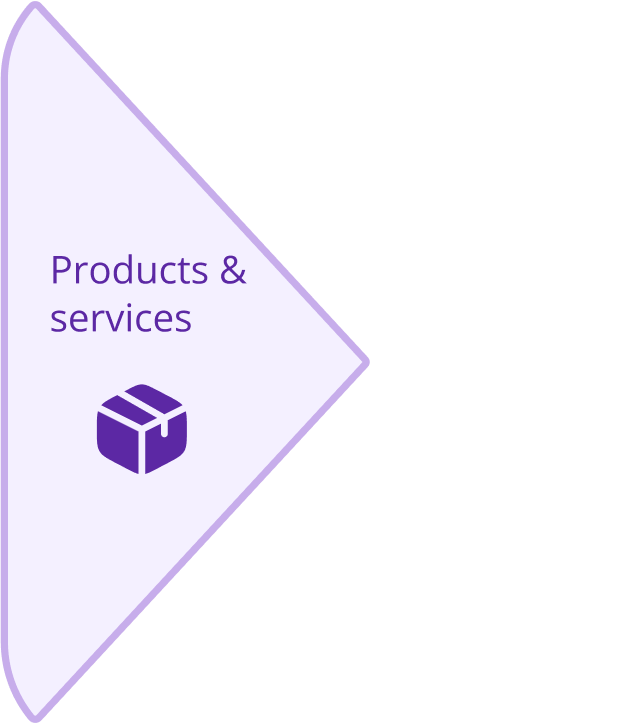
Products are tangible assets that customers can interact with physically. They encompass items that can be bought, transported, stored, and used over time. For customers, choosing a product means gaining a physical solution to their needs or desires, whether it’s appliances for convenience, clothing for expression, furniture for comfort, or laptops and smartphones for connectivity and productivity.
Service Offering:
Services, in contrast, are intangible. They represent the expertise, time, and effort of skilled individuals. For your customers, opting for a service means accessing specialised knowledge or skills that solve problems or enhance their lives in ways products alone cannot. This could include legal advice from attorneys, custom craftsmanship from carpenters, medical care from doctors, personal grooming from hair stylists, or creative work from writers.
Each type of offering, be it a product or service, has its unique implications for customers, addressing their needs in different but equally valuable ways.
Addressing Customer Pains: The Role of Pain Relievers

Within our toolkit, we identify Pain Relievers, crucial elements designed to alleviate the challenges our customers face. Whether it’s through enhancing the quality, offering innovative design, or providing unmatched convenience, each pain reliever plays a crucial role in easing customer burdens.
Guidelines for Identifying Pain Relievers:
- Does your offering help save costs for the customer?
- Can your product or service improve the customer’s overall experience?
- Is your solution capable of enhancing what currently underperforms in the market?
- Can your offering effectively tackle the challenges your customers face?
- Does your product or service reduce or mitigate potential risks for the customer?
Generating Customer Gains: Introducing Gain Creators

Moving on to the benefits we aim to provide, we focus on Gain Creators. These are the aspects of our offering that go beyond mere satisfaction, aiming to impress and provide exceptional value to our customers.
Questions to Guide the Creation of Gain Creators:
- Can your offering provide cost or time efficiencies for the customer?
- Is your product or service capable of delivering unexpected positive outcomes?
- Does your offering have the potential to surpass competitor solutions in delighting customers?
- How does your product or service simplify the lives of your customers?
- Can your offering contribute to positive social outcomes for the customer?
Crafting Your Unique Value Proposition: Elevator Pitch for Success
At the core of defining your market position is the Unique Value Proposition (UVP), a critical declaration of your offering’s distinctiveness. It acts as a guiding light for those seeking alternatives to the norm, highlighting how your solution stands out from the competition. This process culminates in the creation of an elevator pitch, a concise and persuasive summary that encapsulates the unique aspects of your proposition. This pitch aims to quickly answer essential questions about your offering, its target audience, and its unique benefits, ensuring clarity and compelling appeal to potential customers.
Guiding Questions for Defining Your UVP:
- What does your offering encompass?
- Who are the initial target users or early adopters of your product or service?
- Which specific customer problems does your offering address?
- In what ways does your product or service benefit the customer?
- What sets your offering apart from what’s already available in the market?
Incorporating these insights, the UVP serves as the synthesis of the Value Proposition Canvas, providing a clear and compelling message about why your offering is preferable and worthy of attention. It’s not just a brief statement but a strategic summary that clarifies the value and uniqueness of your product or service. By succinctly responding to the “what,” “who,” and “why,” your UVP should articulate not only the innovative or disruptive nature of your offering but also how it improves upon or differs from existing solutions with added features or benefits.
The Elevator Pitch format is widely adopted for crafting these succinct presentations. It encapsulates a brief yet persuasive overview of a product, service, or concept, designed to be shared within the brief span of an elevator journey, usually lasting from 30 seconds to 2 minutes. The primary goal of this pitch is to efficiently convey the core value proposition to potential investors, customers, or stakeholders, ensuring they grasp the essential benefits and uniqueness of the offering promptly.
There are two types of elevator Pitch models. Try both to see which one you like most.
Traditional Elevator Pitch.
What is it you offer?
Example: An intelligent and personal TV & music experience where viewers get to watch TV they love and content providers get to own their audiences.”
Who is it for?
Example: Pzaz is where cultures merge. It’s where we connect globally. One open world where language becomes universal, age is how young you feel, and where we see each other for who we are. We don’t just watch TV, we Pzaz.
What are they dissatisfied with?
Example: They waste over 40 minutes of their day trying to find something to watch. Not being able to find non-mainstream content.
Your key problem-solving capacity?
Example: Unified, all-in-one, cross-device, watch anything, anywhere.
What is your product?
Example: A culturally diverse, global entertainment platform
Elevator Pitch by Geoffrey Moore.
Who is it for?
Example: Wowzers is for entrepreneurs, investors, marketers and growth hackers…
Who are dissatisfied with?
Example: Who are dissatisfied with traditional approaches to sales and marketing.
What is it you offer?
Example: Wowzers provides a unified framework for data-driven growth-experimentation…
Your key problem-solving capacity?
Example: …to prioritise, measure and validate business assumptions and reduce investment risks (time, money, resources)
Who are your competitors?
Example: Unlike the existing project management tools like Basecamp, Microsoft Project and Trello…
What is your product?
Example: …Wowzers is a SAAS specifically designed to discover and engineer extraordinary business growth.
Defining Your Business: Vision, Mission, and Pitch
In concluding our exploration, we solidify our strategy with a clear vision, mission, and an elevator pitch. These elements collectively define not only what we offer but also articulate the purpose behind our endeavours and the methods we will employ to achieve our objectives. They serve as a navigational tool, ensuring we remain aligned with our initial aspirations and successfully navigate towards our intended outcomes.
- Your Vision is the reason behind your business’s existence. Your WHY.
- Your Mission details the approach you take to realise your vision. Your HOW.
- Your Pitch succinctly captures the essence of your business offering. Your WHAT.
This marks the completion of our detailed guide through the Value Hypothesis and Value Proposition Canvas, aiming to equip you with the knowledge to build a compelling and differentiated value proposition.

